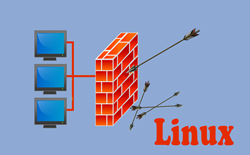Linux Firewall Exploration Lab
SEED Lab: A Hands-on Lab for Security Education
Overview

The learning objective of this lab is for students to gain the insights on how firewalls work by playing with firewall software and implement a simplified packet filtering firewall. Firewalls have several types; in this lab, we focus on two types, the packet filter and application firewall.
Packet filters act by inspecting the packets; if a packet matches the packet filter's set of rules, the packet filter will either drop the packet or foward it, depending on what the rules say. Packet filters are usually stateless; they filter each packet based only on the information contained in that packet, without paying attention to whether a packet is part of an existing stream of traffic. Packet filters often use a combination of the packet's source and destination address, its protocol, and, for TCP and UDP traffic, port numbers.
Application firewall works at the application layer. A widely used application firewall is web proxy, which is primarily used for egress filtering of web traffic. In this lab, students will play with both types of firewalls, and also through the implementation of some of the key functionalities, they can understand how firewalls work.
Lab Tasks
- VM version: This lab has been tested on our pre-built SEEDUbuntu16.04 VM.
Recommended Time
- Supervised situation (e.g. a closely-guided lab session):
- Unsupervised situation (e.g. take-home project):
Videos (New)
- This topic is covered in my Udemy course: Internet Security: A Hands-on Approach.
- If you are in Mainland China, you can access the same course from the NetEase platform.
Suggested Reading
- SEED Book by Wenliang Du
(Book website)
(Chinese version)
- A Mini-Firewall Program (the code has been tested on SEEDUbuntu 16.04 VM)
- Creating a simple "hello world" Netfilter module
- Creating a Netfilter kernel module which filters UDP packets
- Access the Linux kernel using the /proc filesystem
- Parsing program options using getopt